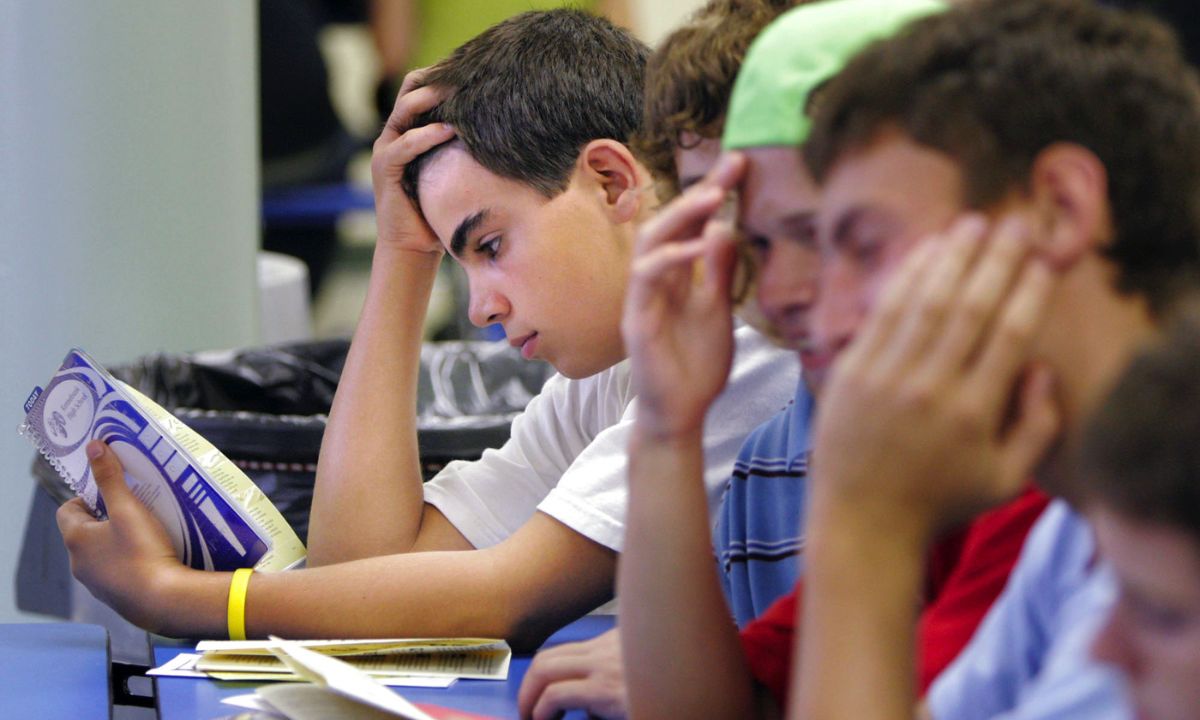For Adolescents Struggling With Reading, It’s Not Too Late To Intervene
Quarantello: Schools can make a difference by investing in the right resources and supporting teachers to address students’ reading deficits.

Get stories like this delivered straight to your inbox. Sign up for The 74 Newsletter
In schools across the country, about one-third of students are behind grade level in reading. Even in Massachusetts, which consistently ranks at the top of various education metrics, this crisis plagues students and educators. While there have always been students who struggle, the COVID-19 pandemic widened existing gaps and made it harder for many to catch up.
We saw this play out at Boston Collegiate Charter School, which serves a socio-economically and racially diverse population of 700 students in grades 5 through 12, as more and more students struggled to stay afloat in their English Language Arts classes. Many students were entering our school without foundational reading skills, and our typical approaches — leveraging rigorous curriculum and scaffolding grade-level texts — weren’t yielding the usual results.
We needed something new, and the strategies we tried and refined this year revealed a lot about our students, our instruction, and what could work for other schools grappling with the same challenges.
The issues with reading have become most acute in our upper grades. We accept new students every year through grade 10, and we’ve found that older students tend to be even further behind in their reading than those entering in fifth or sixth grade. For example, in our 10th grade English class, we have some students reading Antigone, forming thesis statements about the nature of power and loyalty, while others are struggling to decode the meaning of most of the words on each page.
In response, last year we launched a Literacy Working Group made up of interested teachers and school leaders. Our goal was to figure out how to meet the needs of our adolescent students, especially those significantly behind grade-level. As we explored existing research and strategies, we found plenty of literature on how to teach reading to elementary schoolers but saw substantial gaps when it came to older students.
We started by diving into frameworks like the Reading Comprehension Blueprint, Scarborough’s Reading Rope, and materials from Keys to Literacy. These models emphasize that literacy is multi-faceted: Phonics, background knowledge, vocabulary, syntax, and comprehension all work together to create strong readers. We identified the key areas we should be working on with students and then pulled in the broader school community to help.
During our annual, all-staff orientation before students arrive, we spent a significant amount of time laying the groundwork for why this literacy work matters, and how every teacher, regardless of subject, can contribute. We shared tools and strategies like visual maps and categorization of word meanings, word preview exercises, and vocabulary deep-dives.
We also looked beyond individual lessons to consider school-wide initiatives like a “word of the week” to help celebrate academic language and keep literacy front and center. Throughout the year, we revisited and reinforced effective strategies through biannual teacher-led best practice showcases integrated into our regular schedule of professional development. These sessions provided practical tools for teachers to leverage immediately in their classrooms, while also building consistency across content areas and grade levels.
For students who needed more intensive help with decoding and fluency, we adopted the REWARDS program, a structured, research-based intervention specifically designed for older students. It focuses on multisyllabic word recognition, affixes, fluency, and comprehension strategies.
While not every student was excited about joining at first, many began to see real progress. A ninth grader who struggled with multisyllabic words had trained herself to essentially skip them as she read, making meaningful comprehension almost impossible and limiting her to a fifth-grade reading level. Strategies she learned during REWARDS intervention enabled her to start decoding longer words; within months, she was reading nearly on grade level. Her whole outlook on reading transformed, as did her confidence. While not typical of every student, we are nevertheless seeing the greatest gains from students like this, who started the year furthest behind.
To track progress, we’ve been using i-Ready, a diagnostic assessment given to students three times a year. Unlike more-frequent, shorter assessments we’d used in the past, i-Ready has provided more reliable data about where students are starting and how far they’re progressing. There is a strong correlation between students’ scores and their performance on the Massachusetts Comprehensive Assessment System (MCAS) exam, which the state’s students are required to take in grades 3 through 8, as well as grade 10.
On average, i-Ready testing shows that students two or more grade levels behind were making more than a year’s worth of growth in just a few months. While some students are still behind benchmark, the chasm has closed significantly, and they are now within striking distance of grade-level proficiency, giving them a renewed sense of confidence and a real shot at long-term academic success.
Literacy development is not a one-year fix, but by investing in the right resources and supporting teachers to address students’ reading deficits, we’re making the small but steady gains that show genuine advancement. The progress we’ve seen is a testament to what’s possible when schools take a collective, research-based approach to adolescent literacy.
While much funding and attention focuses on early childhood literacy skills, we are committed to serving our students, adolescent learners who still need fundamental literacy support. They also deserve the targeted, thoughtful intervention that empowers them to be fluent readers and full participants in their own learning.
Get stories like these delivered straight to your inbox. Sign up for The 74 Newsletter

;)
